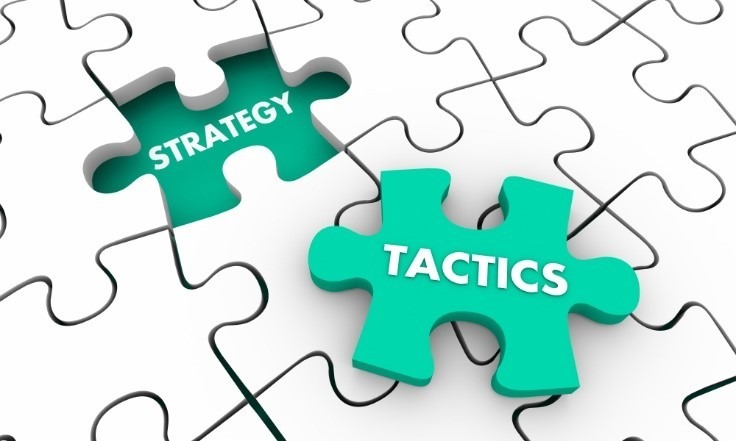Special thanks to Murali Budagavi (Vice President of Avantor Business System (ABS) ) and Ramani Velu (President – Southeast Asia for Air Products) for their contributions. The content for this blog was published in the November 2021 US Print edition of GasWorld.
The first concept of combining Lean and Six Sigma methodologies was created in 2001 by a book titled “Leaning into Six Sigma: The Path to Integration of Lean Enterprise and Six Sigma,” by Barbara Wheat, Chuck Mills, Mike Carnell. It was developed as a guide for managers of manufacturing plants on how to combine lean manufacturing and Six Sigma, to dramatically improve quality and cycle time.
The early Lean Six Sigma (LSS) adopters Motorola, Allied Signal and GE, and more recently companies like Microsoft, Facebook and Amazon have used these principles to drive more consistent and error-free processes, while reducing costs and improving customer satisfaction. However, how is LSS doing with all the external factors/trends companies are facing such as pandemic impacts, emergence of Industry 4.0, and the never-ending appetite of increasing customer expectations? This article will look at the current state of LSS, external trends impacting it, then propose some best practice recommendations for tweaking or re-launching your LSS methodology to aid in maximizing business performance.
Background
To get started let’s define LSS and its components. Lean is a philosophy, toolkit, and mindset that streamlines processes through the elimination of waste. It optimizes flow and ensures that the customer is receiving value from your business. Its origins are from the Toyota Production System (TPS), which coincidentally borrows heavily from Henry Ford’s processes, and some of the tools include Value Stream Mapping, error proofing and JIT (just-in-time). Six Sigma is methodology that uses management tools and techniques that focus on statistical methods, eliminating defects and reducing variations. Six Sigma is an invention of engineer Bill Smith, while working at Motorola, developed this statistical approach, helping reduce defects at Motorola and increase the firm’s profitability. The combination of Lean and Six Sigma’s tools and techniques makes clear what processes are prone to variation and then reduces those variations and waste to ensure continued improvement.
We don’t view continuous improvement as a separate organization or tool set but view it as a key enabler for growth of our company. Our ABS underpins everything we do, and we use it to rigorously execute our strategy and operating plans. Importantly it is used daily by all functions within the organization to contribute to progressing our business goals.
Murali Budagavi, Vice President, Avantor Business System (ABS).
Since the mid-late 1990s, significant cost savings and revenue growth have been documented by some of the biggest companies on the planet. However, from an outsider’s perspective it may appear that utilization of LSS methodologies may be waning due to its lack of visibility in recent years. Several reasons feed that perception with the biggest being the fact that many companies have incorporated LSS activities and organizations under the banner of “Continuous Improvement” (CI), that have been largely embedded in the businesses and functions of a company. Instead of a having large, centralized, and more visible CI organizations, they have been reduced or even eliminated, shifting those resources to the business lines with a few exceptions.
Another reason is the fact that organizations have matured and understand that over time LSS (and other CI methodologies) are enablers for business growth and success. As a result, you see organizations move from having separate CI organizations to having that capability part of every organization and every employee’s tool kit for problem solving.
My experience in building organizations with a focus on continuous improvement (CI), is that the skills need to be part of every employee’s problem-solving skill set. There is value in having a few CI experts that you can access, who can help train new employees and lead large/complex improvements, but when building a culture for everyone, it’s more critical for every employee to have that CI mindset and skills to continuously improve their daily activities and especially what we do for the customer.
Ramani Velu, President – Southeast Asia, for Air Products
So, although LSS may not be as visible as in the past, rest assured it is alive and well, and continues to support annual productivity and efficiency improvements that every company expects.
Benefits & Challenges
The value and benefits associated with LSS haven’t changed significantly over the years and fall into four major buckets:
- Customer – The LSS process starts with the customer and ends with the customer. The methodology (which uses the DMAIC framework – Define, Measure, Analyze, Improve, Control) helps define upper and lower specification levels for every product or service that the customer receives, so the company can determine how well it is performing. When out of specification, it knows exactly what to work on to improve processes and meet/exceed customer requirements.
- Financial – Typically, companies can both reduce costs and increase revenues, resulting in improved profitability.
- Employee Satisfaction – One of the core tenets is to empower every employee to make suggestions by training them how to collect and analyze data within their own process utilizing the LSS toolset.
- Culture – Trained resources (Belts) share their LSS knowledge and problem solving techniques with their peers, and as they rise through the ranks and oversee their own teams, they contribute to building a culture of continuous improvement throughout the company.
However, as with any organizational transformation, if not adequately supported and energized periodically over time, the result is reduced benefits and ultimately failure of the program. Some of the well-known root causes include:
- Lack Senior Leadership – Typically the prime reason for failure. Without strong, committed, and effective leadership to direct and support the program, any implementation attempts will likely fail over time.
- Lack of Strategic alignment – Misalignment on start-up costs, short/long term goals, success measures, resource commitments, are the primary issues. Misalignment on one or more of these items impacts performance and long term success.
- Deployment approach – Moving too fast (without the necessary training and tools in-place), as well as not choosing the right projects that both demonstrate the value of LSS and quickly provide benefits to the organization, slows the uptake, and may cause confusion among the key stakeholders and associates about the value of the entire effort.
There are host of other contributing factors such as lack of training, resource commitment, and the overall resistance to any change; however, the above items are the ones that most impact success. Fortunately, there are many companies who have documented and shared their LSS experiences on how to best address these pitfalls and sustain a successful program.
External Trends

Huge trends are affecting corporations from talent recruitment and management, to digitalization, to climate change, and everything in between. As a result, LSS has had to adjust and be more flexible in how it is used and delivered. Some specific examples include:
- Pandemic-related impacts – When most organizations were struggling to maintain revenue, and became more focused on costs, LSS methodologies/tools were able shine. Reducing waste, streamlining/reinventing processes, and delivering greater customer focus, benefitted from using these tools. In addition, internal organizations/resources supporting these changes reinvented themselves as well, leading more virtual events and even pivoting training from classroom to virtual/online. One example from PepsiCo, even used the Minecraft video game to simulate a 3D PepsiCo warehouse that enabled their teams to solve problems in a virtual teamwork environment and complete the training in an interactive and engaging way while coming up to speed faster. Additional experiences from Avantor included the following:
Agility was reinforced as we pivoted in multiple ways during the pandemic especially in the execution of Kaizen events. We were able to execute complete virtual Value Stream Mapping (VSM) events to address supply chain challenges faced during the pandemic, as well as Kaizen events done 100% virtual. Like many companies, conducting these events at our manufacturing locations were initially challenging. After a few attempts we were able to blend Gemba participation with a virtual setting that were 90-95% as effective as face-to-face events once we piloted various approaches.
Murali Budagavi, Vice President, Avantor Business System (ABS).
- Industry 4.0 – This area has clearly made inroads into our industry (i.e., especially in the distribution and logistics space) and organizations are recognizing that coupling LSS with new technology leads to more waste and flaws being “highlighted instantly” for quicker resolution. When manufacturers implement digital solutions combined with LSS, many manufacturers achieve higher ROI when compared with lower-intensity deployments or digital projects implemented in isolation. Deloitte shared in a recent article, that this type of transformation (at one of its clients) is expected to generate EBITDA improvement of US$20 million annually, reduce costs by 15% per line per year, and improve overall equipment effectiveness (OEE) by 11% annually.
We’ve had good success in using the volumes of data from our ERP and complementary tools to drive improvements. Leveraging continuous improvement tools in concert with analytics has contributed positively towards organizational performance.
Ramani Velu, President – Southeast Asia, for Air Products
- Customer Experience (CX) Management – LSS is an ideal improvement methodology to leverage for improving a company’s customer experience. CX improvement tools such as Customer Journey Mapping which documents the emotions a customer may feel while engaging with a particular company, are increasingly being utilized in tandem with the LSS tool Value-stream mapping (VSM), along with the use of data collection, analysis, and voice of customer capture techniques, to help organizations improve the experience they deliver to customers. The most compelling reason to integrate CX with LSS, is when process cycle time is reduced, creating value for the customer, the company is simultaneously driving down cost.
LSS continues to be leveraged by many other industry trends (i.e., Agile project execution, etc.) primarily because of its long-lasting and sustainable track-record of delivering results.
Best Practices

Business leaders are constantly looking for the “trifecta” of sustainable growth, while at the same time maintaining or even reducing costs and improving the customer experience in the process. LSS is clearly one of the foundational tools that organizations can leverage to accomplish these goals at the same time. Below are a few recommendations on where to start:
- Strategy – As with any transformation it must be led from the top, and the buy-in must be at the executive level. More importantly, the plan inclusive of (how to resource the program, communication plans, change management plans, and a description of what success looks like) must be identified as a key enabler of the business strategy. It works best when linked to addressing a business problem or even a burning deck situation (i.e., cost/quality challenge, market share erosion, etc.). It should be detailed enough to track progress at the executive level and provide a blueprint for execution at the management level. The status of the program needs to be reviewed periodically and should include strategies to get it back on track if it gets derailed. Also consider incorporating this capability within the business strategy as a key lever for driving strategy execution.
- Customer — The pandemic has given companies a renewed perspective on their customers critical requirements. One of the first steps in each LSS project is gathering both business and customer requirements. It’s critical to not settle for a sales/commercial person’s view (as a proxy) of the customer’s problem but implement a fact-based (data-driven) process for assessing the Voice of the Customer. This nuance often impacts the quality of the results.
- Culture — If you are desiring to engender a cultural change to build upon some of the changes that have been added from the pandemic, it is recommended that you establish LSS Champions (made up of senior managers) and deliver that training to them first. It is high-level and focuses on what senior managers need to know to successfully lead the implementation across the organization. In addition to LSS principles, they should understand their key “end to end” business processes (i.e., Order-to-Cash, etc.). The most impactful improvements are the ones affecting the entire organization (not just an individual business or function) and most likely are executed across these end-to-end processes. These Champions will accelerate buy-in and help institute a focus on improvement, the customer, data/analytics, and problem solving, all skills every culture needs to be successful.
- Identify & Exploit Linkages – Every company has multiple initiatives being implemented at the same time, so when deploying something new, it helps to show how it integrates and enhances the performance and tools that are already in-process. An example is leveraging LSS in concert with advanced analytics to provide a disciplined problem-solving framework.
Whether starting a new improvement transformation or refreshing an existing one, it is important to be very targeted in your approach. Focusing on high-priority resolution that enables growth, is the best and quickest way to build momentum and yield impactful results for both the company and your customers.
Ramani Velu, President – Southeast Asia, for Air Products
My experience in building organizations with a focus on continuous improvement (CI), is that the skills need to be part of every employee’s problem-solving skill set. There is value in having a few CI experts that you can access, who can help train new employees and lead large/complex improvements, but when building a culture for everyone, it’s more critical for every employee to have that CI mindset and skills to continuously improve their daily activities and especially what we do for the customer.
Murali Budagavi, Vice President, Avantor Business System (ABS).
Next Steps
LSS methodologies have proved to stand the test of time, demonstrating its value across manufacturing and service industries, as well as different parts of a company (i.e., back-office and transactional activities, manufacturing, supply-chain, and front-office areas such as customer service, sales, and marketing). In all areas it has remained focused on the customer, in driving both revenue growth and reduced costs. In addition to most of the Fortune 500 companies, all 4 major industrial gas players have a CI framework based on LSS (or one of its components), which has been a significant enabler of the productivity and efficiencies they report on a quarterly basis. Therefore, the question you should ask yourself, is your company having a challenge delivering consistent productivity to the bottom line? If so, the time is ripe to consider jumpstarting your organization with a CI methodology leveraging portions of the LSS tool set. If you choose not to do so, we can almost guarantee that your competitors are doing so…




